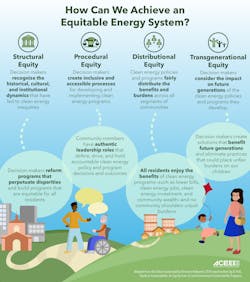OP-ED: Begin with the end in mind
“Begin with the end in mind,” writes Stephen Covey in The 7 Habits of Highly Effective People.
It’s pretty good advice; one we should take seriously in transportation because we haven’t been doing so well.
For example, are these the ends we had in mind when we started building our transportation systems that prioritize private car ownership and private car use?
- Devastated cities?
- Decimated families, neighborhoods and communities?
- Thousands of traffic deaths each year?
- Disproportionate risks for Black and Native Americans and seniors?
- Transportation insecurity for a quarter of U.S. adults?
- Transportation (or the lack of it) directly correlating to poorer health outcomes?
- Transportation as the largest generator of carbon emissions?
Much of the credit for these terrible results goes to the racist roots of our land use and highway-building policies. They are also perpetuated because our systems focus on the outputs rather than the outcomes of our transportation infrastructure and investments.
Transit agencies and municipal and state DOTs measure outputs such as how much faster traffic moves, how many feet or miles of new concrete have been paved or how much more geography and potential riders are covered. Outputs are the immediate results of our actions or programs. Outcomes are the longer term results. Outputs are, “What did we make?” Outcomes are, “What happened because of what we made?”
Outputs are generally easier to measure. Outcomes are harder to gauge and connect to our work, but, if we intend to make our programs, especially our new programs, more equitable—to see if the investments we make in mobility actually improve people’s lives—then we need to plan our projects with an eye towards outcomes and make sure we are finding ways to measure the longer term results.
Item No. 4 of the Shared Mobility 2030 Action Agenda calls the industry to “create standards to measure how shared mobility is making our communities and our society more equitable” and to “use these outcome measures widely.” It particularly calls us to “know how shared mobility is helping households reduce their dependence on private car use and if (the project) is making our communities and society fairer and less unequal.”
Understanding this last component is critical, but we still lack a tool that captures the nuances of measuring equity that goes beyond the immediate data. The American Council for an Energy-Efficient Economy (ACEEE), a member of the network committed to the Shared Mobility Action Agenda, has worked to address these nuances by developing the four dimensions of equity:
- Procedural
- Distributional
- Structural
- Transgenerational
Each dimension is important and is foundational to the next dimension.
Much of the work in making shared mobility more equitable is still concerned with just making sure we consult communities when we plan and roll out shared mobility or just with how we distribute these services—at the procedural and distributional dimensions. These measures are, of course, absolutely critical, but we need to work beyond these. We need to get to the transformational outcomes of transgenerational equity.
Applying these dimensions holistically to transportation systems can start to get us one step closer to the ends we do have in mind. Outcomes we should be working towards include, “Did households lower their transportation costs?” or “Did we reduce transportation insecurity?” or “Did our underserved neighborhoods gain more voice and agency?”
Core to any effort to make mobility more equitable is to work with communities and to ask them the outcomes they seek. Co-creating means the transportation investments and services happen for and with rather than happen to our neighborhoods.
We’ve had nearly a hundred years of auto-centric transportation, and it is not sustainable for our households, our communities and our planet. Let’s begin with different outcomes in mind. Let’s make this decade and this century about shared mobility that is:
More reliable, easier to use, more available
More equitable and accessible
More environmentally sustainable
More economically sustainable
… than driving a car.
---------------------
Benjie de la Peña is the CEO of Shared-Use Mobility Center.
About the Author
Benjie de la Peña
CEO, Shared-Use Mobility Center (SUMC)
Benjie de la Peña is the CEO of the Shared-Use Mobility Center; he chairs the Global Partnership for Informal Transportation; founder of Agile City Partners; and writes and curates Makeshift Mobility, a fortnightly newsletter covering innovations in informal transportation. He also convenes the Shared Mobility 2030 Action Agenda and edits and produces Pop Transport.
He serves on the board of the American Council for an Energy-Efficient Economy (ACEEE), the U.S. Advisory Committee of the Institute for Transportation and Development Policy, the UITP Informal Transportation Working Group, the Digital Transport for Africa Partners Committee, the MobiliseYourCity Steering Committee and is a senior fellow for mobility for the Canadian Urban Institute.
He served as the first-ever chief of strategy and innovation for the Seattle Department of Transportation. He and his team drafted the city’s Transportation Information Infrastructure Plan. He also led the development of Seattle’s New Mobility Playbook.
He served on the advisory committees for L.A.’s Transportation Technology Strategy, the Mobiprize and Cooper Hewitt Museum’s The Road Ahead: Reimagining Mobility and Design with the Other 90%: Cities.

